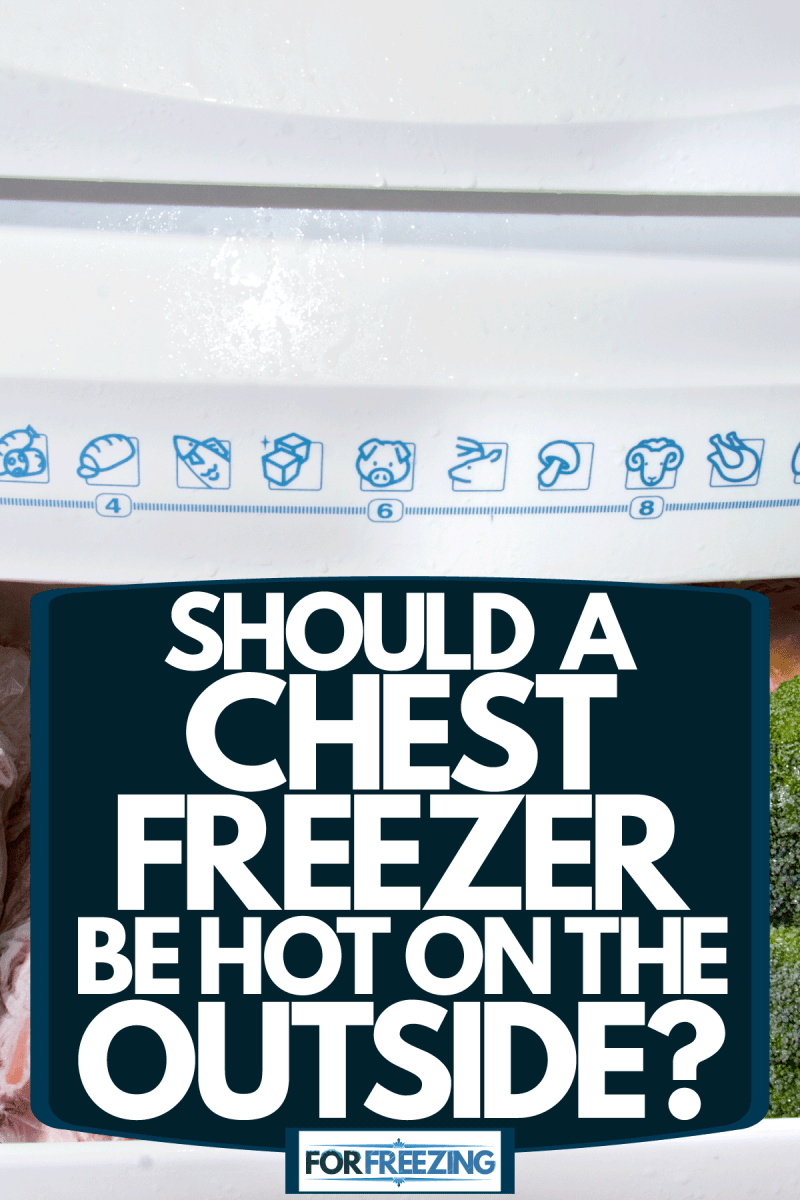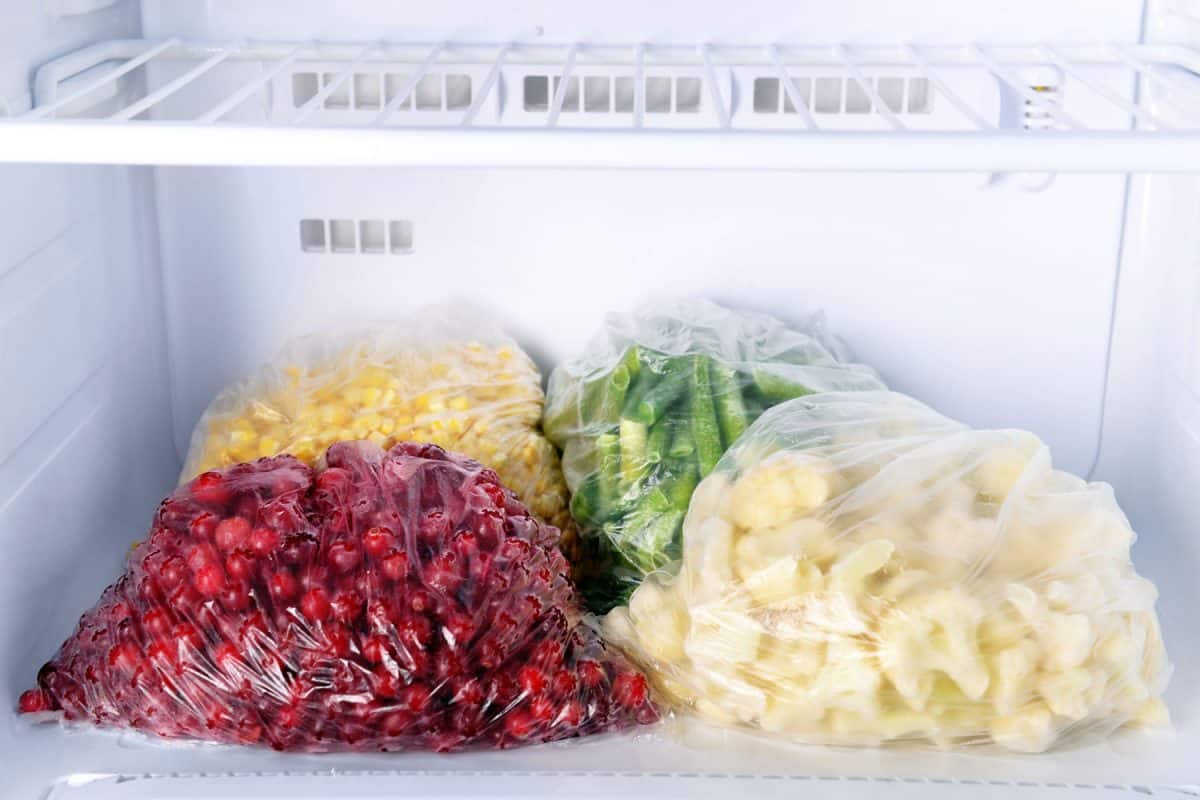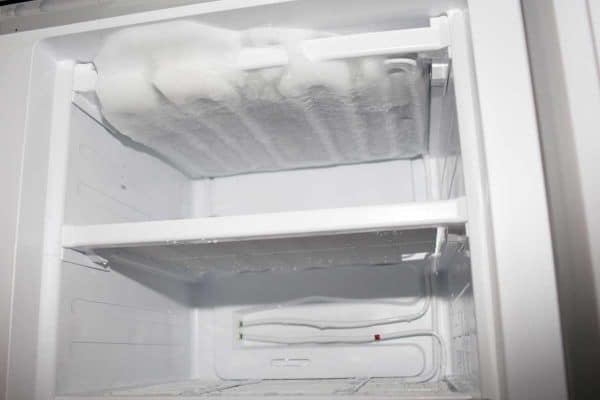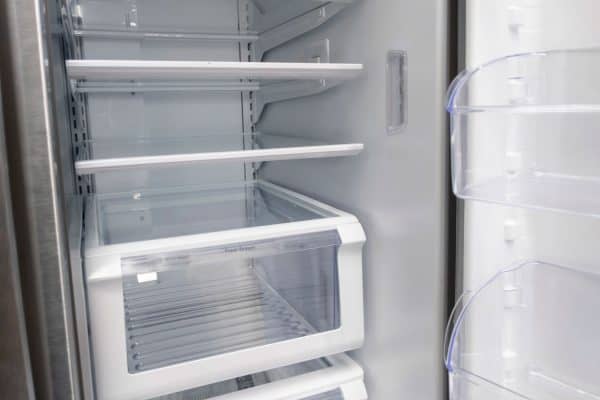If you own a chest freezer, you’re probably one of those people wondering why it is warm on the outside despite having the opposite temperature on the inside. And you may think that a freezer should not create heat on its sides, but this isn’t the case. Is this a cause for worry? We’ve asked experts to get the answer.
It turns out that the sides of chest freezers and other types of freezers should always feel warm to the touch as they pull heat out from the freezer compartment by using the compressor. The condenser dissipates the collected heat to the back or sides of the freezer, thus giving off the warmth.
So don’t immediately panic the next time you check your chest freezer and find its sides warm. If you’re not yet convinced, we will delve into why you can just let your freezer be despite the hot outside most of the time. Continue reading to find out why.
NOTE: WE MAY GET A COMMISSION IF YOU DECIDE TO MAKE A PURCHASE THROUGH THESE LINKS. THERE'S ADDITIONAL NO COST TO YOU. CHECK THE BOTTOM OF THE PAGE FOR MORE INFORMATION.

Is it normal for a deep freezer to get hot on the outside?
The heating of the outer side of all kinds of freezers is a normal phenomenon. And that’s how it should always be, based on science and industrial standards.
To understand why this is so, let’s try to learn how a freezer works.
Inside the freezer is a cooling pipe that contains a refrigerant, a special liquid coolant. A pump connected to the cooling pipe draws the special coolant, turning it into vapor. As the liquid vaporizes, the heat in the freezer and goods is absorbed to cool down the freezer compartment.
This same vapor is sucked again by the pump and squeezed by the compressor to turn it back into liquid. As the vapor liquefies, it releases into the condenser coils the heat energy absorbed during the earlier part of the process to dissipate it.
In other words, a freezer removes heat from the food inside the freezer compartment and transfers that heat to the exterior walls of the freezer. The process continuously repeats in a cycle to reach the freezing point and prevent condensation from forming. Thus, loading more fresh food inside the freezer can make the exterior walls a bit warmer than usual and sometimes mistaken as overheating.
Why is my chest freezer hot on the outside?

The placement of the condenser coils in the chest freezer is another factor affecting the heat transference outside the freezer.
You can find the condenser coils near the outer walls, across the bottom, or at the back of the freezer. Such purposeful design facilitates the dissipation of heat. As a result, the warmth on the mentioned parts becomes naturally noticeable to the touch.
But you still can’t rule out the possibility of overheating, especially if the heat sustains and becomes excessive. When that happens, immediately do a maintenance check-up.
Here are the three most essential freezer heat maintenance check-ups that will help you determine if the heat is still normal or may already be an early sign of overheating.
Look at the condenser coils
The condenser coil can accumulate dust and lint over time and block the airflow. This debris can act as an insulator that will keep the heat from properly dissipating. With more elements stuck to it, the coils will exert more effort to release the heat, preventing the refrigerant from cooling down, leading to overheating.
Cleaning the condenser coil at least twice a year will help prevent the accumulation of dust. Luckily for you, cleaning the condenser coil is a simple maintenance task you can quickly accomplish. Below are the steps you will need to follow:
- Remove all the goods inside your chest freezer and place them in your refrigerator freezer. Shut off the appliance afterward.
- Locate the condenser at the back or bottom of the freezer and remove the grille that covers it. The condenser is usually black and appears like a grid.
- Gently clean the coil using a vacuum cleaner. Use a stiff brush to remove hardened debris.
Examine the condenser fan
Freezers also have condenser fans attached to the compressor compartment. It functions as a temperature regulator for the hot refrigerant from the compressor by circulating the air across the condenser coils.
As the fan sucks in outside air, it also draws in dust and other elements that often get stuck on the bearing. This debris can prevent the fan from activating and result in the temperature rising abnormally.
A quick fix is dusting off the fan along with the condenser coils. Subsequently, apply penetrating oil on the shaft and the bearing to soften it. If the condenser fan still does not turn, it might already be a sign of malfunction; consider replacing it with a new fan motor from your nearest appliance center.
Check the freezer door seal
One simple reason you can easily disregard as to why the outside of a chest freezer becomes extremely hot is the gasket.
The gasket is the protective seal that locks in the cold air inside a freezer. A defective or cracked freezer door seal makes the warm air continuously seep into the freezer and cause the temperature to fluctuate. If that happens, the compressor will work twice or thrice harder to keep the temperature below zero, generating more heat in the process.
To check if the freezer is making the cold air leak, conduct any of the following:
- Stick a dollar bill in between the seal and the doorway and pull it. A fully functioning gasket should have resistance to the pull.
- Run your hands across the freezer door and feel if cold air is escaping.
- Turn on a flashlight and put it inside the freezer. If the light comes through, then the door seal is dysfunctional.
With your findings, you can apply petroleum jelly to fill in the cuts and re-moisturize the door seal. You can also remagnetize the door seal using a neodymium magnet. When none of these work, door seal replacement is the best and last option.
How hot should the chest freezer be on the outside?
Now you know that chest freezers naturally become hot on the outside when activated. But how much heat is normal? And when can we tell the chest freezer is overheating? Let’s take a look at the numbers.
According to General Electric (GE) Appliances, the sides and back of a chest and upright freezer can be 30 degrees Fahrenheit warmer than the room temperature. Meaning, if the ambient temperature is around 66 degrees Fahrenheit, the exterior walls can reach up to 93 degrees Fahrenheit. Once the unit gets past that threshold, directly carry out the maintenance checks above.
Can a chest freezer explode?
Left unchecked, all types of refrigeration and freezing appliances can also catch on fire and explode, as do other home appliances due to the built-up heat in the compressor.
But this should not be a cause for panic as the possibility of the explosion is rare. Only conduct a regular maintenance check-up, and you can avoid an event like this from happening.
The bottom line
Chest freezers heat up as this is how it dissipates heat collected from the contents inside the freezer compartment. It should not be considered as a sign of malfunction, most often. But when the heat reaches a certain threshold, where it already affects the ambient temperature where you put the chest freezer in, conducting a maintenance check will help prevent the possibility of overheating or explosion.



![Woman hand open plastic white container drawer in new refrigerator. How To Put A Freezer Drawer Back In [Inc. For Specific Brands]](https://forfreezing.com/wp-content/uploads/2021/09/Woman-hand-open-plastic-white-container-drawer-in-new-refrigerator.-How-To-Put-A-Freezer-Drawer-Back-In-Inc.-For-Specific-Brands-600x400.png)